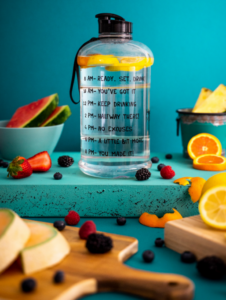Picking Eating: What a Dietitian Wants You to Know
Picky Eating: What a Dietitian Wants You to Know
If you’re dealing with a picky eater—whether it’s your toddler, teen, or even yourself—you’re definitely not alone.
Picky eating is incredibly common, especially in early childhood, and while it can feel stressful, it’s often a normal part of development.
What Is Picky Eating?
Picky eating usually involves rejecting new foods, sticking to a small list of “safe” options, or being particular about how food looks, smells, or feels. This is especially common between ages 2 and 6.
Picky eating often peaks in preschoolers and tends to improve over time. It’s usually about control, exploration, and developing independence—not defiance.
When Should You Be Concerned?
Most picky eaters still meet their basic nutrition needs, especially when a variety of foods is consistently offered. But there are a few red flags that might mean it’s time to talk to a pediatrician and a dietitian:
- Eating fewer than 20 total foods
- Difficulty gaining weight or growing
- Gagging, vomiting, or panicking around food
- Mealtimes feel tense or traumatic
What Actually Helps? (5 Research-Backed Tips)
- Follow the Division of Responsibility
Developed by dietitian Ellyn Satter: Parents decide what, when, and where food is served; kids decide if and how much to eat. Less pressure = less power struggle. - Don’t Force or Bribe
Studies show that pressuring kids to eat makes them less likely to try those foods later. Offer without expectations and stay relaxed. - Model What You Want to See
Eat together, try new foods, and show curiosity. Kids are more likely to follow your lead than your instructions. - Make Food Fun
Let your child help pick out fruits, stir the sauce, or arrange food on the plate. Exposure without pressure builds familiarity and reduces fear. - Respect Sensory Needs
Some picky eating is tied to texture sensitivity or other sensory processing differences. Try to offer options that match their comfort level while gradually introducing variety.
Bottom Line
Picky eating is a phase for most kids, not a permanent problem. Your job is to keep offering a variety of foods in a calm, pressure-free environment. Over time, curiosity and confidence tend to grow.
Progress isn’t always a bite — it might be a sniff, a lick, or just letting a new food sit on the plate. Celebrate those tiny wins!


 st first. I know it’s tempting to grab the freshest one however when it comes to food waste we’re doing ourselves a disservice for minimal flavor difference.
st first. I know it’s tempting to grab the freshest one however when it comes to food waste we’re doing ourselves a disservice for minimal flavor difference.

